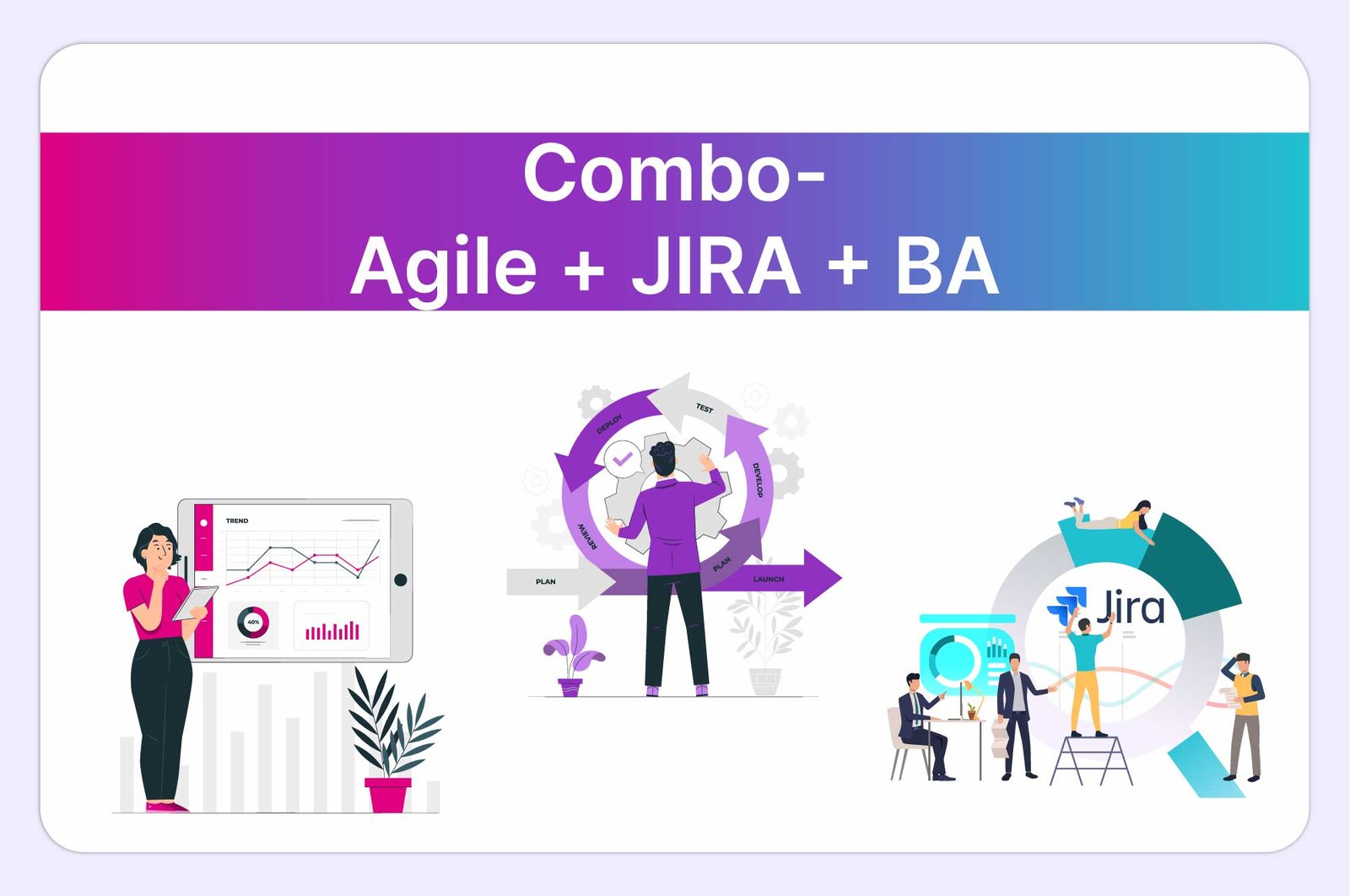
Business Analysis + Agile + JIRA
Home > Business Analysis + Agile + JIRA

Business Analysis + Agile + JIRA - Combo course
SansAnk Academy offers a comprehensive Business Analysis, Agile, and JIRA Combo Course that combines these essential areas. Participants will acquire practical skills in requirements gathering, Agile methodologies, and the effective use of JIRA for project management. This course is ideal for professionals looking to enhance their skill sets in a dynamic business environment.
Curriculum
Overview of the role, responsibilities, and key skills required for business analysts.
Software Development Life Cycle (SDLC) encompasses the various phases and models involved in the process of developing software, from requirements gathering to maintenance and support.
Software Development Life Cycle (SDLC) and Agile methodologies highlight the contrasting approaches to software development, with SDLC emphasizing a structured, sequential process and Agile promoting iterative, flexible development cycles.
Elicitation and its techniques encompasses the systematic process of gathering and discovering requirements from stakeholders using various methods such as interviews, workshops, and observations
The requirement process encompasses the systematic and iterative approach of gathering, analyzing, documenting, validating, and managing requirements to ensure successful delivery of a desired product or solution.
Functional and nonfunctional requirements highlight the distinction between functional requirements that define system behavior and capabilities, and nonfunctional requirements that specify quality attributes and constraints for the system's performance, usability, security, and other aspects.
Functional decomposition entails the process of breaking down complex functions or systems into smaller, more manageable and understandable components to analyze, design, and develop them effectively.
Business Requirements Document (BRD), Functional Requirements Document (FRD), and Fit Gap Analysis, involves the systematic creation of comprehensive written materials that capture business needs, functional specifications, and identify gaps between desired and existing system capabilities for effective planning and decision-making.
Unified Modeling Language (UML) with Draw.io entails utilizing the graphical notation and Draw.io tool to visually represent and communicate system designs, structures, and behaviors for improved understanding, analysis, and documentation purposes.
Wireframing with Balsamiq involves utilizing the Balsamiq tool to create low-fidelity, interactive visual representations of user interfaces and layouts for effective communication, collaboration, and early-stage prototyping in the design process
Manual testing encompasses the process of executing tests and verifying software functionality and performance manually, without the use of automated tools, to ensure quality, identify defects, and validate system behavior.
Live case studies involves the examination and analysis of real-world scenarios, problems, or situations to gain practical insights, apply theoretical knowledge, and derive meaningful conclusions for enhanced learning and decision-making
Client call practice involves simulating and rehearsing communication with clients to develop effective interpersonal skills, active listening, and the ability to address client needs, concerns, and requirements professionally and efficiently.
Principles and practices of Agile development, including Scrum and how they differ from traditional waterfall project management.
Detailed explanation of daily stand-ups, sprint planning, sprint reviews, retrospectives, and other ceremonies used in Agile project management.
Techniques for writing user stories, grooming the backlog, and prioritizing features based on business value.
Methods for estimating effort, time, and resources required for Agile development projects, including planning poker and affinity estimation.
Overview of JIRA as a tool for Agile project management, including how to create and manage issues, assign tasks, track progress, and generate reports.
Detailed instruction on customizing JIRA to meet specific team needs and workflows, including configuring issue types, workflows, and screens.
Using JIRA to generate reports and dashboards that provide real-time visibility into project progress, team productivity, and quality metrics.
Best practices for integrating business analysis with Agile development methodologies to deliver high-quality software that meets customer needs.
Using JIRA to plan and track project work, including creating sprints, managing backlogs, estimating effort, and allocating resources.
Overview of project management principles and practices in Agile, including risk management, stakeholder engagement, and change control.
duration : 5 Weeks
Online Session
Batch Size: 1-5 Candidates
Price: ₹20,000

At SansAnk Academy, we bridge the gap between knowledge and skills with hands-on, industry-relevant training. Learn. Apply. Excel.
© SansAnk Academy Pvt. Ltd. | Transforming Education, One Skill at a Time